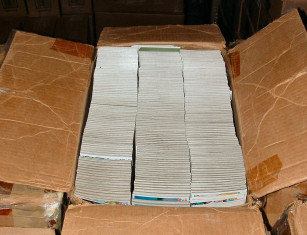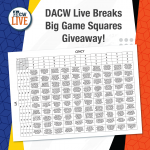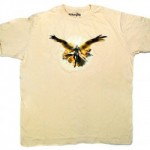Steve Myland is one of the most prolific trading card dealers of all time. Based in Phoenix, Steve was a regular advertiser in Sports Collectors Digest throughout the 80s and 90s, promoting some unbelievable items most of us could have only dreamed existed. As one of the dealers chosen by Topps to handle their year-end closeouts, he ended up with unimaginable quantities of product that always seemed to get better with age. His legendary collection has been virtually untouched for the past ten years, until now. Dave & Adam’s Card World is proud to offer some of the finest items from the Steve Myland Collection.
 One of the major components of the deal is cut card cases. Collectors who like to open product and find gem mint cards to grade prefer cut card cases over any other type of packaging. Unlike the other forms of unopened product, where a card is wrapped in wax or cellophane, exposed to gum or wax, and forced into a cardboard box, cut card cases contain cards that go straight from the cutting machine and into the shipper case. The result is rows and rows of pristine cards that have never been exposed to the elements. You can be sure that our entire cut card case inventory is from the original buyer of the Topps year-end closeout and are 100% unsearched.
One of the major components of the deal is cut card cases. Collectors who like to open product and find gem mint cards to grade prefer cut card cases over any other type of packaging. Unlike the other forms of unopened product, where a card is wrapped in wax or cellophane, exposed to gum or wax, and forced into a cardboard box, cut card cases contain cards that go straight from the cutting machine and into the shipper case. The result is rows and rows of pristine cards that have never been exposed to the elements. You can be sure that our entire cut card case inventory is from the original buyer of the Topps year-end closeout and are 100% unsearched.
One of the least common and misunderstood packaging options in trading cards, cut card cases were utilized by Topps and O-Pee-Chee throughout the 70s and 80s as a way to closeout year-end stock. These cases were not made available to regular candy wholesalers like wax, cello, and rack, but to a select few companies that specialized in buying excess inventory in bulk.
A typical cut card case consists of 8,650 cards, and may or may not have been sealed with glue or tape when it left the factory. After all, these cases were not meant to be resold in its current form. The contents of a case varied greatly when compared to its much more common counterpart, the vending case. In a vending case, Topps would randomly package 12,000 cards (500 cards to a vending box) from a particular sport/year, therefore ensuring the expectation of being able to make a certain quantity of sets. With a cut card case, a single sheet or combination of sheets are cut down to individual cards, then packed in bulk (without 500 count boxes) into a case that holds approximately 8500-9000 cards.
In order to determine what cards are available in a cut card case, one must determine what cards come on a particular sheet. For example, on the back of the 1987 Topps Barry Bonds rookie #320, the code found on the card indicates that it was cut from the sheet. Therefore, in a cut card case with only the sheet of cards, one can estimate there will be 65 of each card from the 132 card sheet (8,650 divided by 132 cards on a sheet = approximately 65.)
Related Posts
 1-888-440-9787
1-888-440-9787
 We Ship Internationally
We Ship Internationally
 FREE Gifts with orders $100+
FREE Gifts with orders $100+








I have collected cards most of my life and somehow I had missed out on hearing about the cut card case.
Joey… Being a collector on and off through my life I had never heard of these before either. When I started here in the marketing department and heard about this deal I knew that they were really excited about the cut card case component. It has been interesting getting a crash course on these.
Awesome. Too bad I can’t afford the really good ones. haha.